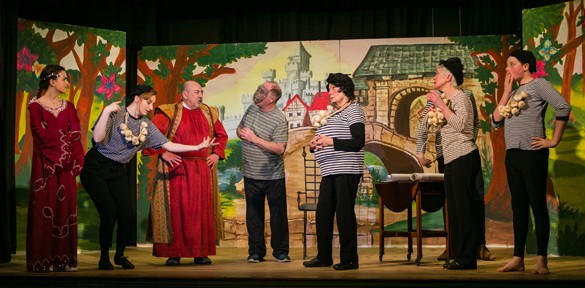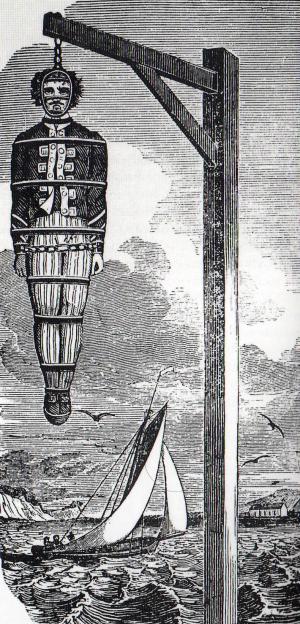Pilton Panto has just completed its third year back in Pilton Church Hall with a production of Robin Hood & the Babes in the Wood over the February half-term holiday. While Friday’s performance was only seen by a half full hall – were they all at The Gang Show in the Queen’s Theatre instead? – the crowds came on Thursday and twice on Saturday which almost sold out.
 This classic combination of two different pantomime themes – Robin Hood and The Babes in the Wood – worked very well, thanks to the excellent writing and direction of Lee Smith. And this gave us so many of the key elements of the English panto – villains, a dame, a principal boy, slapstick, “they’re behind you” and “oh no he won’t” moments and, of course, romance – as well as being liberally scattered with well-known cultural references. Admittedly a few of them didn’t actually occur until at least 300 years after the events in Nottingham, but why spoil a good story for a bit of chronology! The story was narrated by an amazing talking Oak Tree – and why not? Played out in front of wonderful scenery, it included an archery contest and the clever idea of a gallery of portraits coming alive to scare Robin Hood’s Merry Men. It shows that you just need the right imagination to create a brilliant, albeit improbable, story. It’s all about two and a half hours of suspension of the real world! And this year an even larger number of people were involved in the cast and behind the scenes. Well done all.
This classic combination of two different pantomime themes – Robin Hood and The Babes in the Wood – worked very well, thanks to the excellent writing and direction of Lee Smith. And this gave us so many of the key elements of the English panto – villains, a dame, a principal boy, slapstick, “they’re behind you” and “oh no he won’t” moments and, of course, romance – as well as being liberally scattered with well-known cultural references. Admittedly a few of them didn’t actually occur until at least 300 years after the events in Nottingham, but why spoil a good story for a bit of chronology! The story was narrated by an amazing talking Oak Tree – and why not? Played out in front of wonderful scenery, it included an archery contest and the clever idea of a gallery of portraits coming alive to scare Robin Hood’s Merry Men. It shows that you just need the right imagination to create a brilliant, albeit improbable, story. It’s all about two and a half hours of suspension of the real world! And this year an even larger number of people were involved in the cast and behind the scenes. Well done all.
Panto is definitely going from strength to strength in Pilton.
Vera Macfarlane

